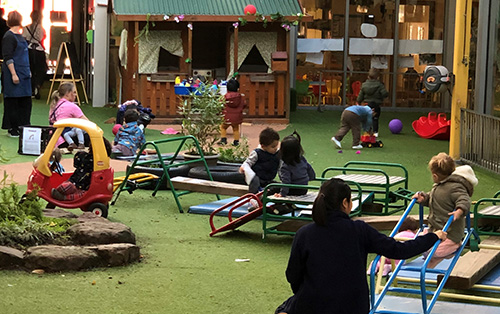
Understanding the Child Care Subsidy in Victoria

When it comes to child care, one of the foremost concerns for parents is affordability. Recognising this, the Australian government, in collaboration with state jurisdictions like Victoria, has put forth subsidies to assist families. In this post, we'll delve into the specifics of the child care Subsidy (CCS) in Victoria, helping parents navigate and understand this beneficial provision.
1. What is the child care Subsidy (CCS)?
The child care Subsidy (CCS) is a government initiative aimed at supporting families by reducing the financial burden of child care. By subsidising costs, it ensures that more children have access to quality care, thereby aiding parents in balancing work and family responsibilities.
2. Who is Eligible?
Eligibility for the CCS in Victoria mirrors the national standards:
Residency Status: The child must be an Australian resident or hold a specific visa type that qualifies.
Immunisation Status: Children need to be up to date with their immunisation schedules or on a recognised catch-up schedule.
Activity Test: Parents must undertake a specified amount of work, study, training, or recognised voluntary work.
3. How Much Can Families Receive?
The amount of CCS a family can receive is based on three factors:
Combined Family Income: The level of subsidy scales inversely with family income – the lower the income, the higher the percentage of subsidy.
Activity Level of Parents: The number of hours of activity (like work, study, or training) undertaken by parents determines the number of hours of subsidised care they can access.
Type of child care Service: Different rates apply for different types of accredited child care, such as long day care, family day care, or outside school hours care.
4. How to Apply for the CCS in Victoria
Parents can claim the CCS by signing into their Centrelink online account through the myGov website. Here, you can provide details about your family's income, your child's enrolment in a child care service, and meet the other necessary criteria. Once approved, the subsidy is typically paid directly to the child care provider, reducing the fees parents pay.
5. Additional child care Subsidy (ACCS)
For families in Victoria facing additional challenges, there's the Additional child care Subsidy (ACCS). This is a top-up to the standard CCS, catering to families requiring temporary financial hardship relief, parents who are transitioning to work from specific income support payments, or children at risk of harm.
In Conclusion
The child care Subsidy in Victoria is a testament to the government's commitment to accessible, high-quality child care for all. By understanding how the CCS works, Victorian families can make informed decisions and ensure their children receive the best early childhood education and care, without the accompanying financial strain.
Remember, child care isn't just about supervising children – it's about nurturing the next generation, and Victoria is making strides in this direction.
Contact us today to discuss your child care needs.


